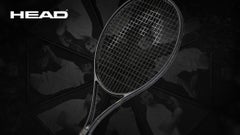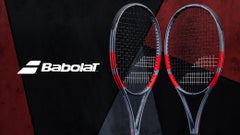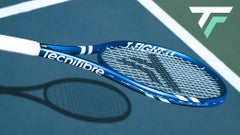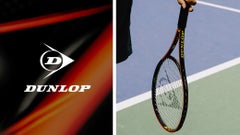Force Grip Review - by Oak Gast
Whether you are changing your take-back or adjusting your angle of pronation after contact, the Force Grip allows for quick and easy repetition of one specific tennis motion. As such, coaches and players alike now have an easy training tool to effectively shortcut muscle memory buildup in the process of making mechanical changes. This practical approach allows for on and off the court training to improve both strength and fine-motor skillsets. In addition to warming up and engaging your various muscle groups on court, the Force Grip does an excellent job of straightening out one’s swing path to drive the ball deeper into the court. As such, the Force Grip is a valuable coaching tool in the right hands, allowing creativity to flourish through dedicated instruction. By focusing on exact moments within a player’s overall motion, the possibility for fine-tuning mechanics increases dramatically.
Groundstrokes
The Force Grip, when utilized for groundstroke warm-up, gets muscles engaged quickly and intensely. Going to hitting directly afterward feels like a smooth transition, as contact feels extremely rewarding having just prepped a swing mechanic repeatedly. Depending on the angle and the kind of swing, the Force Grip has a very linear path to allow for practical development on lag time, swing-path direction, and weight transfer. If working on leg loading for weight transfer, the Force Grip encourages deeper flexibility and more forceful movement in preparation for groundstrokes.
Volleys
When warming up volley mechanics, the Force Grip easily mimicked the blocking, slicing, and punching motions required for volleys. It allowed for several quick repetitions, easily warming up the forearm muscles. Having resistance against this motion helped stabilize the volleys upon impact.
Serving
The Force Grip seems most useful for strengthening back muscles during serving preparation. Depending on the anchoring, a variety of small motions like the toss transition, the trophy pose setup, and the serve pronation are easily accessible for mechanical adjustments. The resistance factor allows for easy swings upwards after using the Force Grip, allowing for more acceleration upwards onto the ball.
Rehabilitation
When working back to full health, repeated movement in a concentrated area is vital. Be it a wrist injury, shoulder concerns, or the fearsome tennis elbow, the Force Grip nurtures and strengthens inflamed areas to fully sustain the arm. By replicating a racquet’s feeling in hand, the linear resistance band capability then allows for targeted attention to specific muscle groups used on court. Physical trainers now can address on-court needs wherever they might need to, boosting recovery timelines. Wrist issues can be addressed via pronation exercises for example, and elbow strengthening can be accomplished via shadow swings. Additionally, shoulder range of motion and flexibility can be improved by anchoring the Force Grip to a high/low setup.













